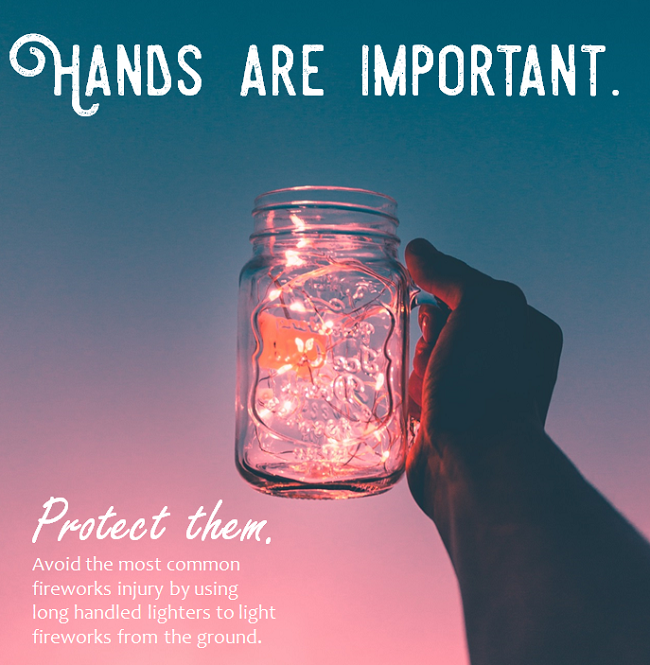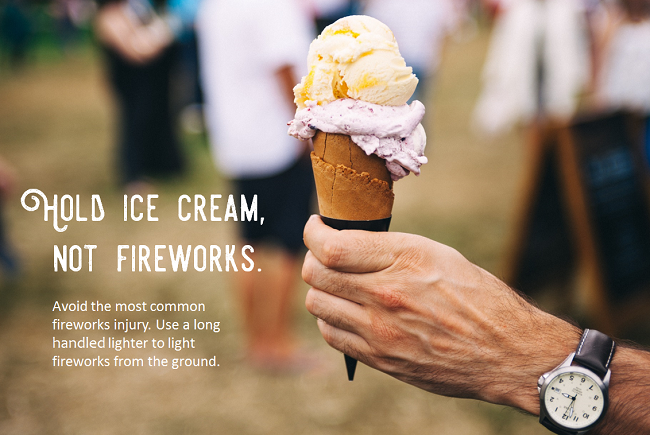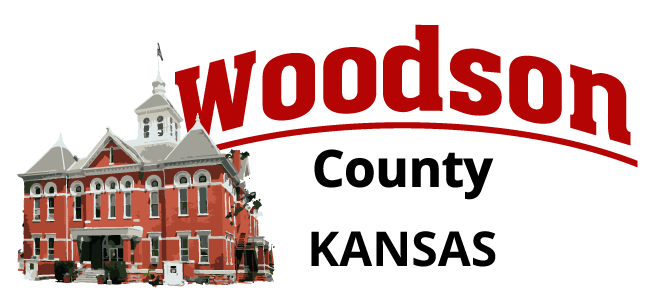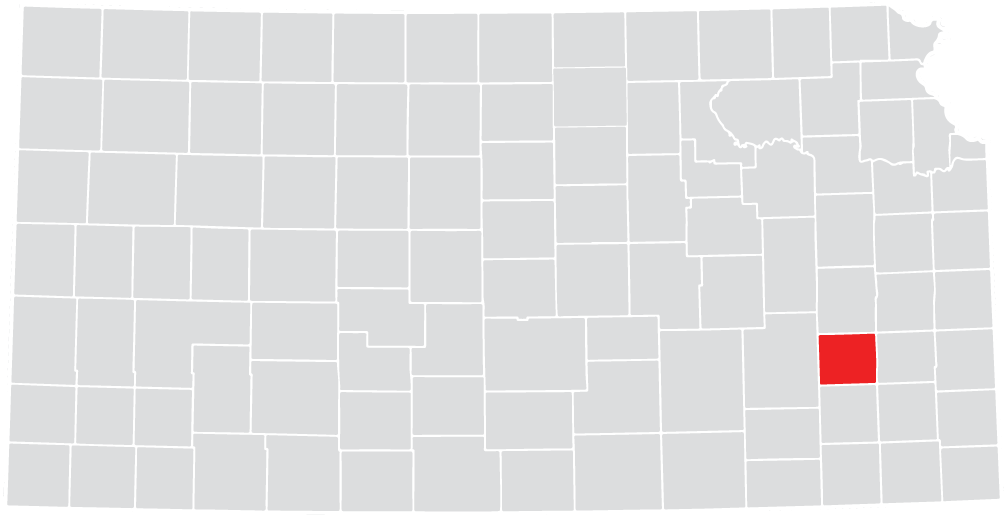Welcome to Woodson County, Kansas

Woodson County want to remind residents of the importance of safety around fireworks. Fireworks can be dangerous to both adults and children if not handled properly.
According to the Kansas Syndromic Surveillance Program, in 2016 there were 144 reported fireworks-related injuries. Injuries to hands were involved in 40 percent of incidents and 27 percent involved injuries to the eyes, face and head.
Shooting your own fireworks can be a thrill, but they can also cause serious injuries and fires if not handled properly. Only person’s with experience handling fireworks should use them. The safest way to enjoy fireworks is to visit a public fireworks display that is conducted by trained professionals who know how to properly handle fireworks. Summer festivities should be fun and enjoyed as safely as possible.
Firework Safety Tips
To help the public celebrate safely, the following tips should be followed for the safe use of fireworks:
- Always purchase high quality fireworks from reliable and legitimate sources
- Always read and follow label directions
- Have an adult supervise all fireworks activities
- Always ignite fireworks outdoors
- Have water nearby
- Never experiment or attempt to make your own fireworks
- Light only one firework at a time
- Never re-ignite malfunctioning fireworks
- Never give fireworks to small children
- Store fireworks in a cool, dry place
- Dispose of fireworks properly
- Never throw fireworks at another person
- Never carry fireworks in your pocket
- Never shoot fireworks in metal or glass containers
In addition, bottle rockets and M80s are dangerous and illegal in the state of Kansas. The use or sale of these banned fireworks is considered a crime under Kansas law.

FIRE SAFETY FOR BACKYARD FUN
Fire in the grill, cooking hot dogs and burgers, is a welcome sight at the family cookout. But fire anywhere else can make your summer barbecue memorable for all the wrong reasons. To keep you and your family safe while grilling, follow these Grilling Safely tips...
1. Propane and charcoal BBQ grills should only be used outdoors.
2. The grill should be placed well away from the home, deck railings and out from under eaves and overhanging branches.
3. Keep children and pets away from the grill area.
4. Keep your grill clean by removing grease or fat buildup from the grills and in trays below the grill.
5. Never leave your grill unattended.
BACKYARD FIRE PITS
Fire pits are a fantastic addition to any homestead or rural backyard. They are attractive, inexpensive to use and help to extend the use of your yard. But when you use a fire pit you are literally playing with fire! Careless misuse could not only set your own house ablaze, but also could spark a grass fire and endanger others nearby.
Positioning Your Fire Pit
Whether you are using a portable fire pit or planning to install a permanent one, positioning is key to safety:
- Make sure the fire pit is, at minimum, 10 feet away from any structure or neighboring yard—25 feet is preferable.
- Do not position a fire pit under a covered porch or low hanging tree branches.
- Always place a fire pit on a non-flammable surface, such as patio blocks or concrete.
- Do not put a fire pit on a wooden deck or directly on grass.
Preparing Your Fire Pit
- Clear all flammable materials away from your fire pit before using it. Five feet is a good distance. This “break” in vegetation will help prevent an escaped fire from spreading.
- Piling dirt or rocks around the pit will also help prevent any fire on the ground from escaping.
- The fire pit should be at least 6 inches deep at the center and 2 feet across, to help keep the embers and flames contained.
Lighting Your Fire Pit
- Always check wind direction before you light a fire and remove anything flammable downwind of the pit.
- If it is too windy, do not light your fire pit.
- Do not use lighter fluid to light a fire pit; instead, a commercial fire starter stick with kindling on top is ideal.
- Do not use any flammable fluids (gasoline, lighter fluid, etc.) to light or relight fires.
WILDFIRE RISK REDUCTION
Every year, wildfires burn across the U.S., and now more people are living where wildfires are a real risk. By working together, residents can make their own property — and their neighborhood and county— much safer from wildfire
YOU CAN MAKE A DIFFERENCE!
Increase your wildfire safety.
Make simple low-cost changes to your home and landscape starting today.
SAFETY TIPS
Action Items to Improve Your Home’s Survivability:
• REMOVE leaves, pine needles, and other flammable material from the roof, gutters, and on and under the deck to help prevent embers from igniting your home. .
• SCREEN areas below decks and porches with 1/8” wire mesh to help prevent material from accumulating underneath.
• COVER exterior attic and soffit vents with 1/8” wire mesh to help prevent sparks from entering your home.
• ENCLOSE eaves to help prevent ember entry.
• INSPECT shingles or roof tiles. REPLACE missing shingles or tiles. COVER ends of tiles with bird stops or cement to help prevent ember penetration during a wildfire.
Tips for Landscaping Around Your Home
• REMOVE dead vegetation and other flammable materials, especially within the first 5 feet of the home.
• KEEP your lawn hydrated and maintained. If it is brown, cut it down to help reduce fire intensity.
• PRUNE tree limbs so the lowest branches are 6 to 10 feet above the ground to help reduce the chance of fire getting into the crowns of the trees.
• MOVE construction material, trash, and woodpiles at least 30 feet away from the home and other outbuildings.
• DISPOSE of branches, weeds, leaves, pine needles, and grass clippings that you have cut to reduce fuel for fire.
• CONTROL debris in wooded areas on your property. Keep leaves and downed trees to a minimum so that there is less fuel for a wildfire.

For additional Information on Wildfire Safety Please Visit:
KANSASFOREST.ORG/FIRE_MANAGEMENT
FIREWISE.ORG/WILDFIRE-PREPAREDNESS
Most home fire deaths result from fires in homes with no smoke alarms or no working smoke alarms. Households with non-working smoke alarms now outnumber those with no smoke alarms. When smoke alarms fail, it is most often because of missing, disconnected or dead batteries. Test smoke alarms once month and replace the batteries when you switch your clocks for Daylight Savings Time.
Most people believe they will have significant time before a fire in their home would become life-threatening. In actuality, the time available for safe escape is often just a few minutes. It’s critical for household to establish and regularly practice a fire escape plan so that everyone remembers what to do in case of an emergency.
GET EVERYONE INVOLVED
Make a Plan
- Draw a floor plan for each floor of your home, including windows and doors. For each room, find all the ways out, and label them on your plan.
- Designate who will assist children out of the home to safety. Have a back-up plan in case the primary person is overcome by smoke, or is not home.
- Have escape routes clear at all times. If you live in a 2 story house have escape ladders available and make sure everyone knows where they are and how to use them.
- Decide on a safe meeting place for your family. Make sure it is a safe distance away from the home; this could be a corner on your block or a neighbor’s house.
Steps to Preparation
- Make sure everyone knows what to do and where to go in case of a fire.
- Test your smoke alarms once a month, and make sure everyone in the household can recognize the sound.
- Teach every member of the household to get low and crawl on the ground, where the air is less smoky.
- Teach every member of the household how to react if the catch on fire. STOP, DROP, and ROLL.
- Make sure everyone knows how to use the back of his hand to check doors for heat before opening. Teach them to use a different way out if the door is hot to the touch.
- If your house requires the use of an escape ladder, show everyone where you keep it, and how to use it.
- Children can become scared and confused during emergencies, so teach them to never hide from firefighters.
- Make sure everyone knows NEVER go back inside a burning building. Once they are out, stay out!
- Talk about what happens in a fire openly and answer any questions.
Do a Home Fire Drill
- Practice your fire escape plan twice a year. Fires can start anywhere in the home and at any time, so run through the plan at different times of the day or night, and practice different ways out.
- Use a stopwatch to time how fast everyone can get out and to the specified meeting place. The goal should be under 2 minutes.
- Practice feeling the door and doorknob with the back of your hand for heat.
- Explain that if they do catch fire, they need to stop, drop and roll.


